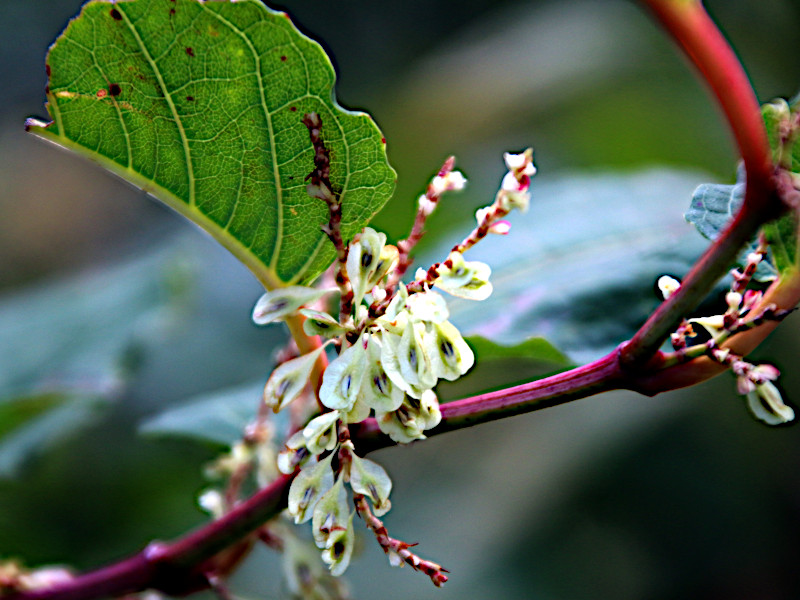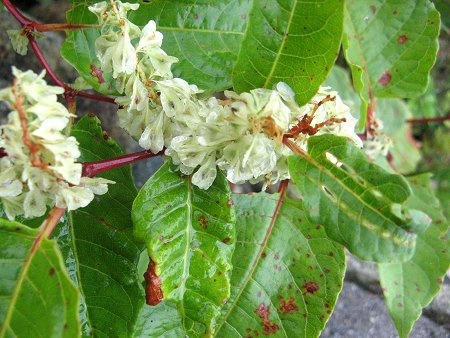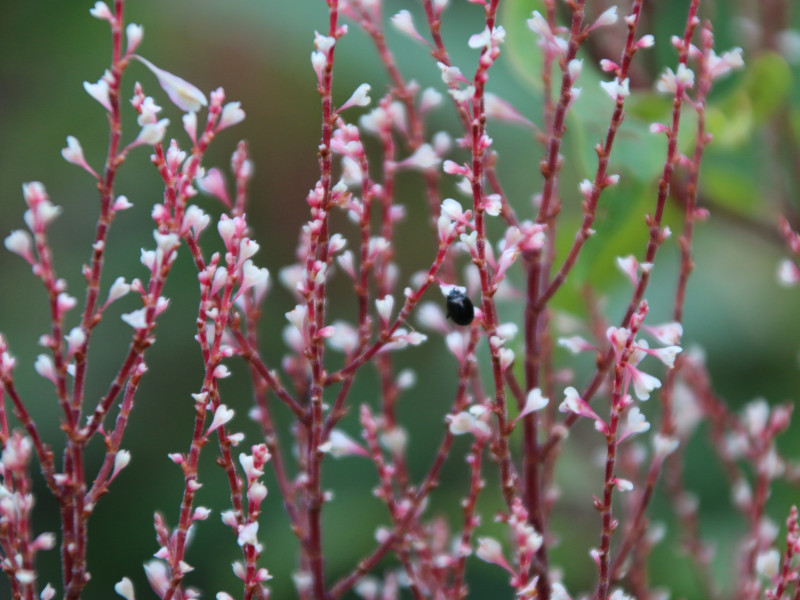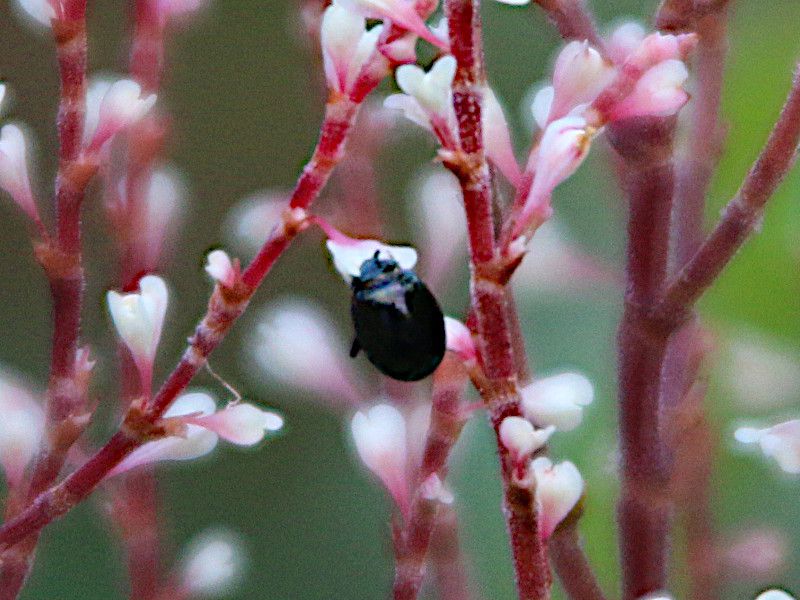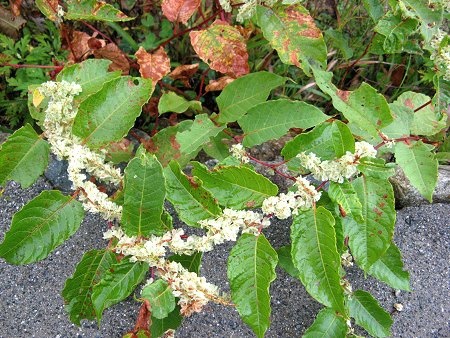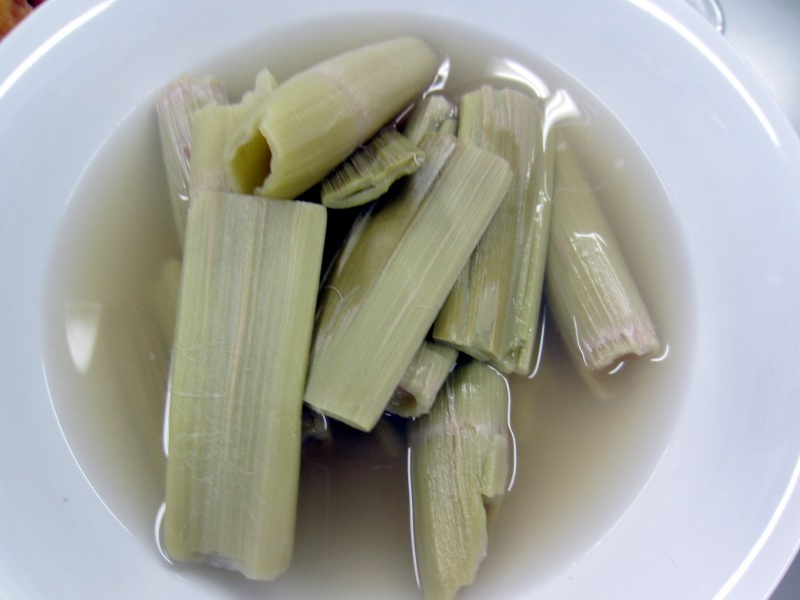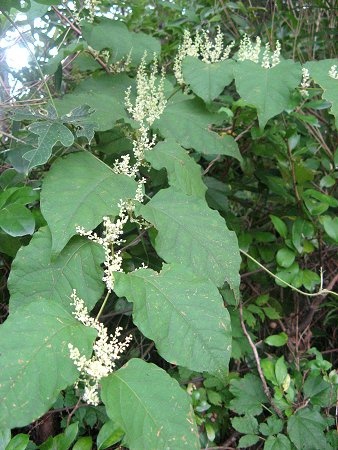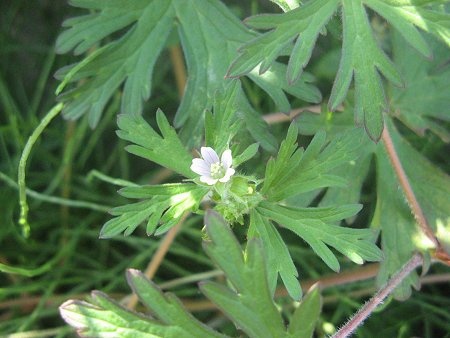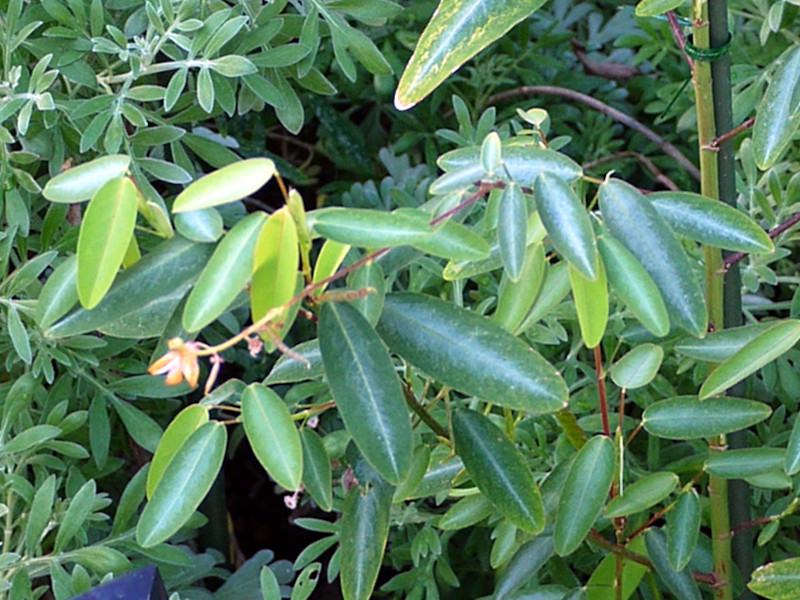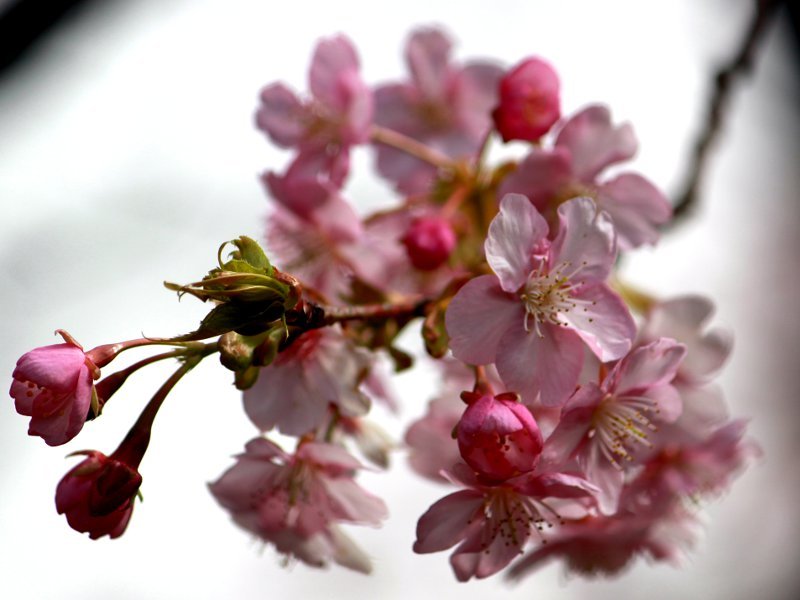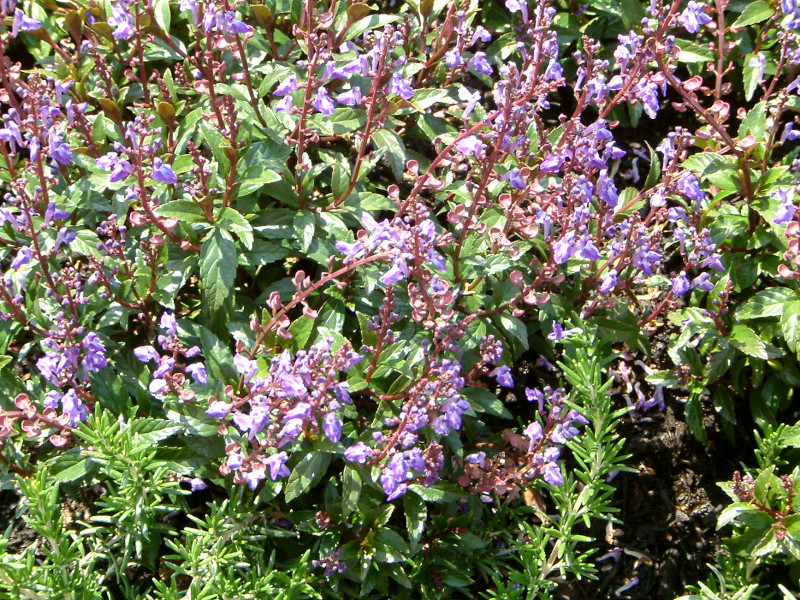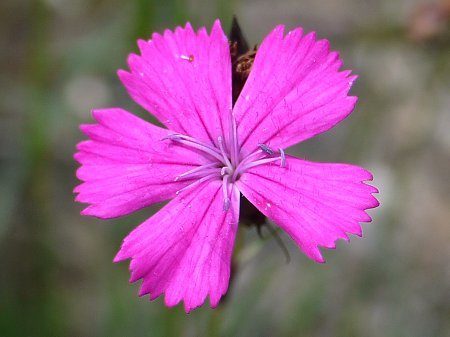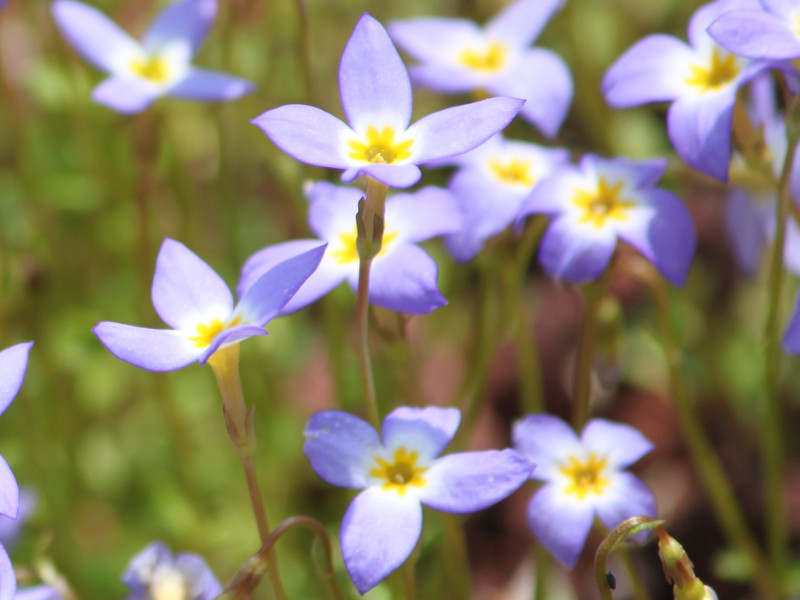Japanese knotweed
- Flower nameJapanese knotweed
- Scientific nameFallopia japonica
- Aliasスカンポ, 虎杖, Japanese knotweed
- Place of originEast Asia
- Place of floweringFields and footpaths
- Flowering seasonJuly, August, September, October
What is Japanese knotweed
Japanese knotweed (scientific name:Fallopia japonica) is a perennial species of the family polygonaceae , genus Fallopia native to East Asia. It grows wild in the fields and mountains of Japan from Hokkaido to Kyushu. It is known as the pioneer plant which takes root in the early growth of rhizomes strong in the place where there was natural disaster. The stem is hollow. The triangular leaves are each other, and there are wave in the edge. It lets quiet white blossoms bloom in the fields and mountains in autumn from summer. Aafter flowers , white fruits become and are the anemophilous flowers which there are the seeds with the wing in autumn and are scattered by wind and spread. The flower name depends on getting a pain when It adds the liquid which massaged a leaf to a wound. The hollow big stem and bud become the spring edible wild plant. It is cooked after pulling lye because acidity is strongly sour, and doing it.
Generic name: Japanese knotweed, Scientific name:Fallopia japonica, Origin:East Asia, distribution: from Hokkaido to Kyushu in Japan, environment: Fields and mountains , height of plant: 150-200cm, a blade: 5-15cm, leaf shape: A triangle, a phyllotaxis: Each other , a leaf edged: wave pattern, dioecism, inflorescence form: A compound raceme, a petal: nothing , tepal: 5divisions, perianth : white - crimson, diameter:1cm, anthesis: For from July to October, fruit type: achene, fruit form: An obovoid form, the fruit head: 0.5-1cm, a seed: Spatule.
